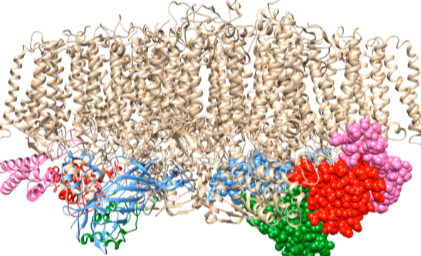Uncover the mystery of cytochrome

Cytochrome, a vital component of cellular respiration, plays a crucial role in the electron transport chain. This protein complex, found in the inner mitochondrial membrane, facilitates the transfer of electrons during the generation of ATP, the main energy currency of cells.
Cytochromes are known for their diverse structures and functions, aiding in various biological processes beyond energy production. Understanding the significance of cytochrome sheds light on the intricate mechanisms underlying cellular metabolism and provides insights into the interconnectedness of biological systems.
Its versatility and importance in sustaining life underscore the fundamental principles of freedom and autonomy within the realm of biological processes.
Structure of Cytochrome
The structure of cytochrome refers to the arrangement of its protein components and heme group that facilitate electron transfer reactions within cells.
Cytochrome structure is crucial for its function in cellular respiration, where protein folding plays a significant role in maintaining the integrity and efficiency of electron transport chains.
Understanding the intricate details of cytochrome structure and protein folding is essential for studying cellular energy production mechanisms.
Functions of Cytochrome
A key function of cytochrome is its role in facilitating electron transfer reactions within cells. These reactions are crucial for generating energy through processes like oxidative phosphorylation.
Cytochrome is a vital component of the electron transport chain, working alongside other mitochondrial enzymes to drive ATP production. Its ability to transport electrons efficiently ensures the smooth flow of energy within the cell, supporting various biological functions essential for cellular activities.
Role in Cellular Respiration
Playing a crucial role in cellular respiration, cytochrome is a key player in the electron transport chain. Its function involves facilitating the transfer of electrons, a process vital for driving ATP production.
Through this mechanism, cytochrome acts as an essential component in the energy conversion process within cells, ensuring the efficient generation of ATP molecules necessary for various cellular activities.
Read more: Pure Kana Cbd Reviews
Importance in ATP Production
Continuing its crucial function in cellular respiration, cytochrome significantly contributes to ATP production through its role in the electron transport chain.
By shuttling electrons along the chain, cytochrome facilitates the generation of a proton gradient across the inner mitochondrial membrane.
This gradient drives ATP synthesis by ATP synthase, leading to the production of ATP, the cell’s primary energy source.
Cytochrome’s involvement in electron transport directly impacts ATP generation within the cell.
Conclusion
In conclusion, cytochrome is a vital component of cellular respiration, playing a crucial role in ATP production. Its intricate structure allows it to function effectively in the electron transport chain, contributing to the generation of energy in cells.
Interestingly, studies have shown that a single molecule of cytochrome can participate in thousands of electron transfer reactions per second, highlighting its incredible efficiency in powering cellular processes.




